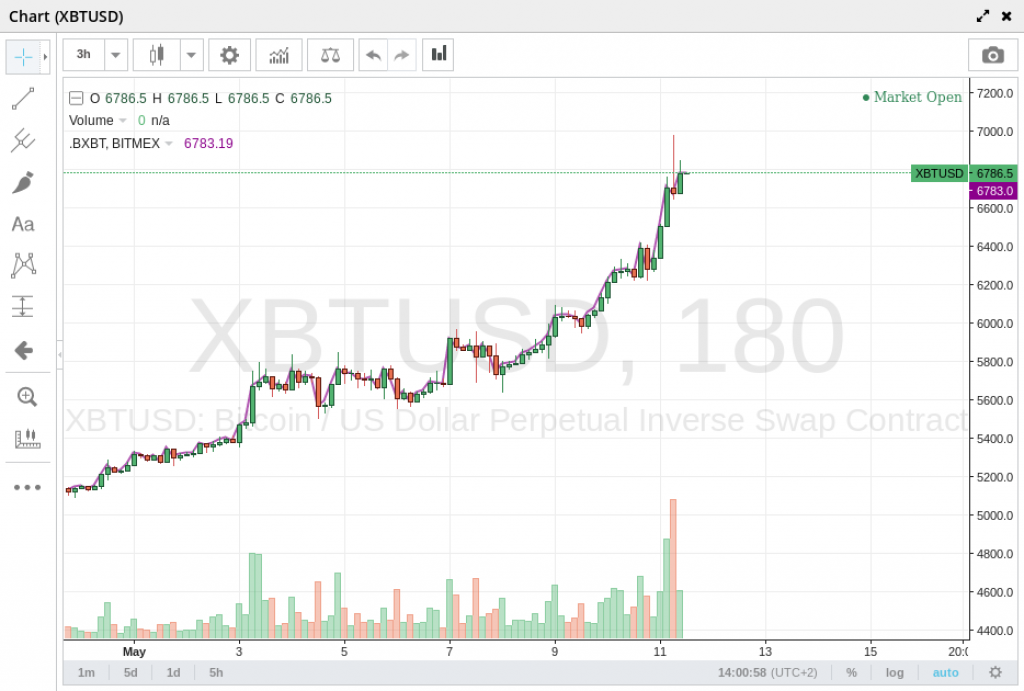
BitMEX is a professional trading broker for long and short trades on price differences, which distinguishes the trading platform fundamentally from most other Bitcoin trading platforms.
The BitMEX margin trading platform therefore functions fundamentally differently from other crypto exchanges. Although the platform only allows deposits and withdrawals in BTC, it is not the Bitcoins themselves that are bought or sold here.
With other crypto trading platforms, on the other hand, you can execute a simple buy order to buy Bitcoin and then pay it out.
With BitMEX however there is no simple buy order. A buy order at BitMEX is inevitably always concluded with a sell order. And a sell order is always concluded with a buy-back order – the so-called long and short trades. So on BitMEX you don’t buy or sell Bitcoin – you only trade price fluctuations. Just like with classic CFD trading.
Of course, this professional trading system is not as easy to understand as a simple cryptocurrency exchange platform. There are a few details that must be understood when trading on BitMEX in order to use the platform properly and profitably.
Why BitMEX Traders Get Liquidated Unexpectedly
One problem that inexperienced and new traders encounter again and again are surprising liquidations.
If you already trade actively, you know of course what the liquidation price is. You should know this price exactly before every trade.
In the case of a liquidation, the price has gone too far in the wrong direction, and your margin is not enough to keep the trade going. The trading platform must close your trade inevitably so that the lender gets his money back including fees. So far understandable.
But why do some traders wonder at what price they were liquidated?
To understand this, you have to understand the price levels BitMEX trades at.
There is not one price, but several price levels that have to be considered.
The price structure at BitMEX is based on 3 prices:
- The Index Price
- The Mark Prize
- The Last Price (Orderbook)
The BitMEX chart always displays 2 of them – the mark price (purple) and the last price (green in case of rising price / red in case of falling price).

The index price (not displayed in the chart) forms the basis of the price structure, it is the underlying reference price reflecting the general Bitcoin market. This price is the average of the current BTC prices of other major exchanges, in this case BitStamp and CoinbasePro.
The mark price is based on the index price and is calculated according to the formula:
Mark Price = Index Price * (1 + Funding Basis)
The Mark Price is also known as the Fair Price.
The Funding Basis in this calculation refers to the fees involved in margin trading. The explanation of exactly how the funding base is calculated is somewhat complex, so we will not go into it further in this article. The important point here is: The Funding Basis is a very small percentage number in this formula, so the Mark Price is always very close to the index price.
This Mark Price (or Fair Price), which is always close to the average BTC price of other big Bitcoin exchanges, is the price that determines the liquidations.
This price serves to protect traders from particularly volatile price fluctuations and unnecessary liquidations. The Mark Price is comparably less volatile than the price in the BitMEX order book. It’s therefore independent of the current prices in the order book.
The prices at which BitMEX traders currently trade (order book – green price in chart) can move a bit above or below the index price or mark price. The price difference can even be relatively large. This effect is caused by the high leverage offered by BitMEX. If many traders trade significantly higher amounts than their margin by using high leverage, volatile price fluctuations can occur.
If, for example, a trader suddenly opens a very large position that makes the price in the oder book swing strongly for a short moment, other traders would be liquidated due to this price swing, which would not have happened without this exceptionel large market order. But this is not the case because the short price swing in the oder book does not affect the Mark Price. And only this price counts for the liquidations.
So always pay attention to the Mark Price with regard to your liquidation price.


